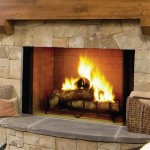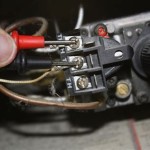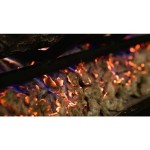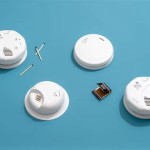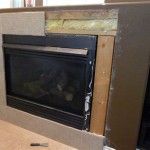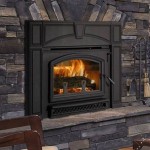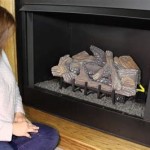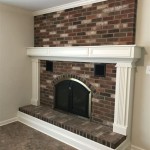Build Your Own Fireplace Insert: A Guide to Enhancing Your Fireplace
A fireplace insert is a valuable addition to any home. It can enhance the aesthetics and functionality of your existing fireplace, providing warmth and efficiency. While purchasing a pre-made insert is an option, building a custom fireplace insert offers a personalized and potentially cost-effective solution. This article will guide you through the process of building your own fireplace insert, providing insights into the materials, tools, and steps involved.
Planning and Design
Before embarking on the construction process, thorough planning is essential. This includes determining the size and shape of the insert, considering the existing fireplace's dimensions and the desired aesthetic. It's crucial to ensure that the insert fits seamlessly within the fireplace opening and complements the overall design of the room. You should also consider the desired heat output, which will influence the materials chosen for the insert. For example, a cast iron insert will provide greater heat retention than a steel insert. In addition, consider the desired viewing area, as this will influence the design of the firebox and the placement of any glass or metal doors.
Materials and Tools
Building a fireplace insert requires various materials and tools. The core components typically include: *
Firebox:
This is the heart of the insert, where the fire burns. Common materials include cast iron, steel, or firebrick. *Damper:
This controls the airflow into the firebox, allowing for efficient combustion and regulating the heat output. *Doors:
Glass doors are a popular choice as they provide a clear view of the fire while also enhancing safety. *Frame:
The frame surrounds the firebox and doors, providing structural support and ensuring a seamless fit within the fireplace opening. Typically made from steel or wood. *Insulation:
This helps prevent heat loss and enhances safety by reducing the risk of overheating surrounding materials. *Gasket:
This ensures a tight seal between the doors and the firebox, preventing smoke leakage. *Tools:
A variety of tools are required, including measuring tools, a level, a drill, cutting tools, and welding equipment (if using metal for the frame and firebox).Construction Process
Building a fireplace insert involves several key steps: 1.
Build the Firebox:
Start by constructing the firebox. This may involve welding pre-cut steel plates, assembling cast iron sections, or laying firebricks. Ensure that the firebox is adequately sized and the seams are properly sealed to prevent air leaks. 2.Install the Damper:
The damper should be fitted to the firebox opening, ensuring proper operation and airflow control. 3.Construct the Frame:
The frame provides structural support and a secure fit for the firebox and doors. It can be made of steel, wood, or a combination of both. Ensure that the frame is sturdy and properly sized to fit the fireplace opening. 4.Install Doors:
Once the frame is in place, install the doors, ensuring a tight seal with the frame and firebox. This will minimize smoke leakage and enhance safety. 5.Insulate the Insert:
Apply insulation to the rear and sides of the firebox to prevent heat loss and protect surrounding materials. 6.Final Touches:
After installing the insert, ensure a proper fit within the fireplace opening and apply any necessary finishing touches, such as paint or sealant.Safety Considerations
Building a fireplace insert requires careful attention to safety: *
Fire Safety:
Use non-combustible materials for the insert, such as cast iron, steel, and firebrick. Ensure proper ventilation to prevent smoke buildup and carbon monoxide poisoning. *Heat Safety:
The insert will generate significant heat, requiring proper insulation and clearance from surrounding materials to prevent overheating and fire hazards. *Electrical Safety:
If using electrical components, such as a blower system, ensure proper wiring and grounding to prevent electrical hazards. *Professional Installation:
If you're uncertain about any aspect of the construction or installation process, it's always advisable to consult with a qualified fireplace professional.Building a fireplace insert is a complex process that requires careful planning, accurate construction, and strict adherence to safety guidelines. By following these steps, you can create a custom fireplace insert that enhances your home's warmth, ambiance, and efficiency.

How To Build A Diy Built In Fireplace With An Electric Insert The Creative Mom

Diy Fireplace With Electric Insert Angela Marie Made

How To Build A Diy Stone Fireplace Boxwood Design Co

How To Build A Fireplace Red Cottage Chronicles

Diy How To Build A Fireplace In One Weekend Whitney Hansen Money Coaching

How To Diy An Amazing Electric Fireplace Surround And Mantle Drawer

How To Build A Diy Fireplace Surround For Your Electric Insert Hand Treated Home

Easy How To Build A Diy Fireplace With An Electric Insert Design

How To Build A Diy Fireplace With Electric Insert Mantle Faux Mantels

How To Build A Fireplace Red Cottage Chronicles
Related Posts

